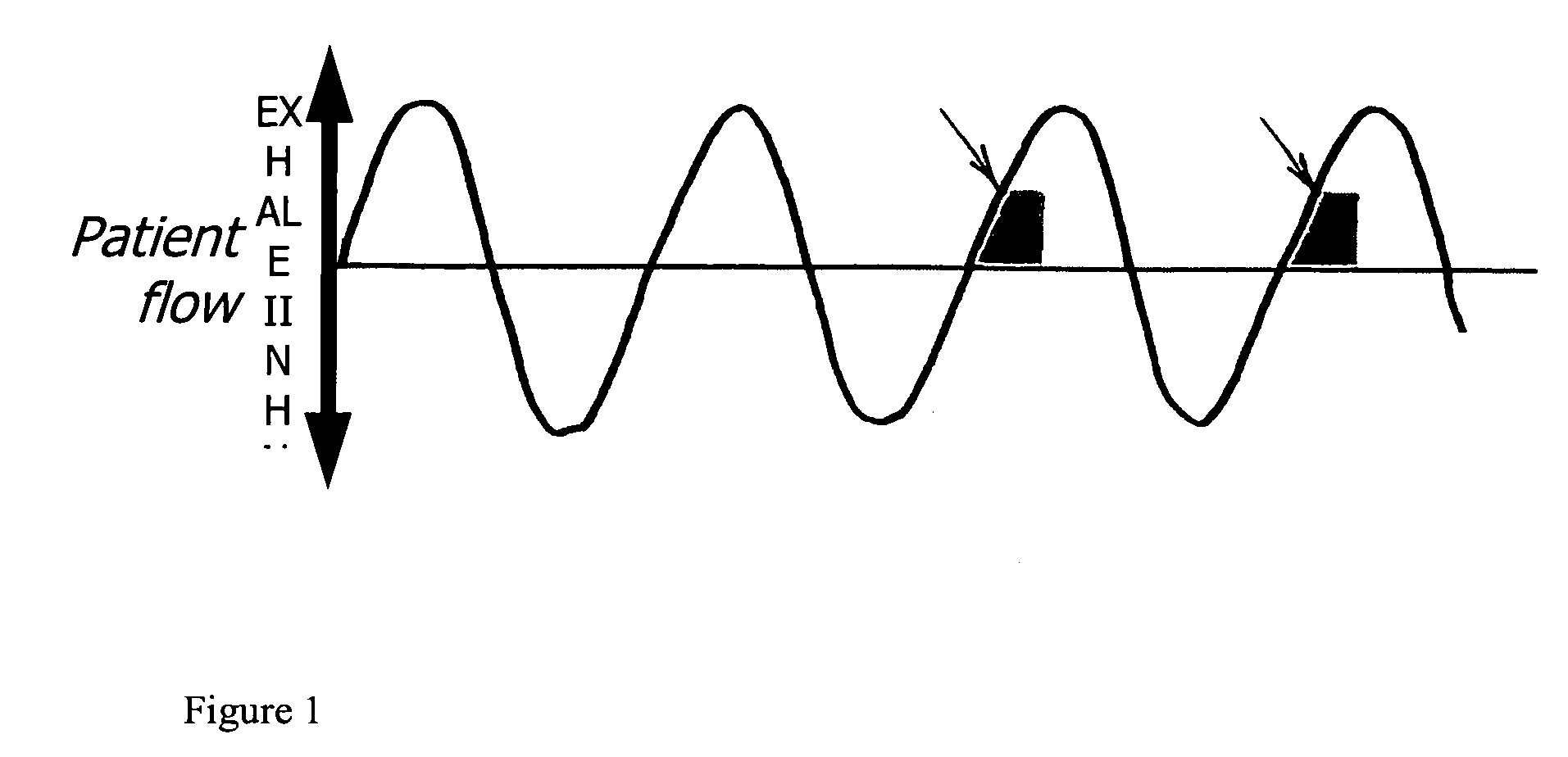Method of treating tuberculosis with interferons
a technology of interferons and tuberculosis, which is applied in the direction of antibacterial agents, peptide/protein ingredients, and aerosol delivery, etc., can solve the problems of increasing the risk of reactivation, the afflicted are often easily fatigued, and the death of more than half of their victims, so as to reduce the conversion of sputum and reduce the wheezing
- Summary
- Abstract
- Description
- Claims
- Application Information
AI Technical Summary
Benefits of technology
Problems solved by technology
Method used
Image
Examples
example 1
[0091]Each patient was asked to participate in a deposition study (under separate consent) of IFN-γ administered via hand-held nebulizer. This deposition study was designed to study aerosolized IFN-γ as follows. The drug was labeled with 99 mTc and administered via aerosol nebulizer. Using the “attenuation technique”, the dose of IFN-γ delivered to various regions of the lung was calculated. The initial dose of 500 μg IFN-γ was used, as this dose has previously been shown to be safe. The dose is adjusted according to deposition studies in each individual patient. A follow up bronchoscopy was performed at the end of the therapy, using the protocol described above. BAL was guided by lung deposition images, so that the areas of highest drug deposition was analyzed and compared to areas of lowest delivered drug and pre-aerosol IFN-γ samples. In this way, total dose to each area of the lung can be calculated and determined. Depending on clinical response and BAL data, dose may be adjuste...
example 2
Effects of Aerosol IFN-γ
[0109]Adverse effects We treated 15 individuals (normal volunteers and patients with pulmonary tuberculosis) with aerosolized IFN-γ. The aerosol administration was well tolerated with few patients complaining of occasional cough or myalgias. The longest period of administration was 3 months without an increase in adverse effects. In addition, Jaffe found that aerosolized IFN-γ given to normal subjects was safe, without systemic side effects, and was able to activate alveolar macrophages and not PBMC, as opposed to parenterally delivered r IFN-γ, the effects of which could only be noted in the peripheral blood (Jaffe et al., (1991) J Clin Invest 88(1): 297-302).
[0110]Deposition studies We investigated the aerosol deposition characteristsics of IFN-γ. A deposition image is shown and reveals that radioactivity (aerosol) is deposited to all normal areas of the lung. Disease and cavitary areas are spared. Perfusion scan shows minimal perfusion to cavitary areas as...
example 3
[0112]In this study investigation of transcription factor abundance, phosphorylation, and DNA binding activities test the hypothesis that aerosol IFN-γ treatments impinge on cellular signal transduction pathways to activate latent STAT-1 and induce de novo synthesis of IRF-1. We performed these experiments on BAL cells obtained from uninvolved and involved areas of lung in patients with pulmonary tuberculosis pre and post treatment with IFN-γ (Condos et al., (1999) Am J Respir Crit Care Med (in press)). Purifying and cloning IRF-1 was a principal part of the initial work performed by Richard Pine, Ph.D., in the Laboratory of Molecular Cell Biology at Rockefeller University with James E. Darnell, Jr. (Pine et al., (1990) Mol Cell Biol 10(6): 2448-57). Immunoblot and electrophoretic mobility shift assays the same as or similar to those proposed for Aim 3 of this project have been employed in the work mentioned here.
PUM
| Property | Measurement | Unit |
|---|---|---|
| inspiratory time | aaaaa | aaaaa |
| time | aaaaa | aaaaa |
| particle size | aaaaa | aaaaa |
Abstract
Description
Claims
Application Information
 Login to View More
Login to View More - R&D
- Intellectual Property
- Life Sciences
- Materials
- Tech Scout
- Unparalleled Data Quality
- Higher Quality Content
- 60% Fewer Hallucinations
Browse by: Latest US Patents, China's latest patents, Technical Efficacy Thesaurus, Application Domain, Technology Topic, Popular Technical Reports.
© 2025 PatSnap. All rights reserved.Legal|Privacy policy|Modern Slavery Act Transparency Statement|Sitemap|About US| Contact US: help@patsnap.com



